MEMS case study - Elysium Farm
Learning the ‘why’ of bush regeneration – Brett Abikhair, “Elysium Farm”
Introduction
In 2014, Brett Abikhair was living in the city and enjoying a successful career in the finance industry, however he had decided it was time for a tree change.
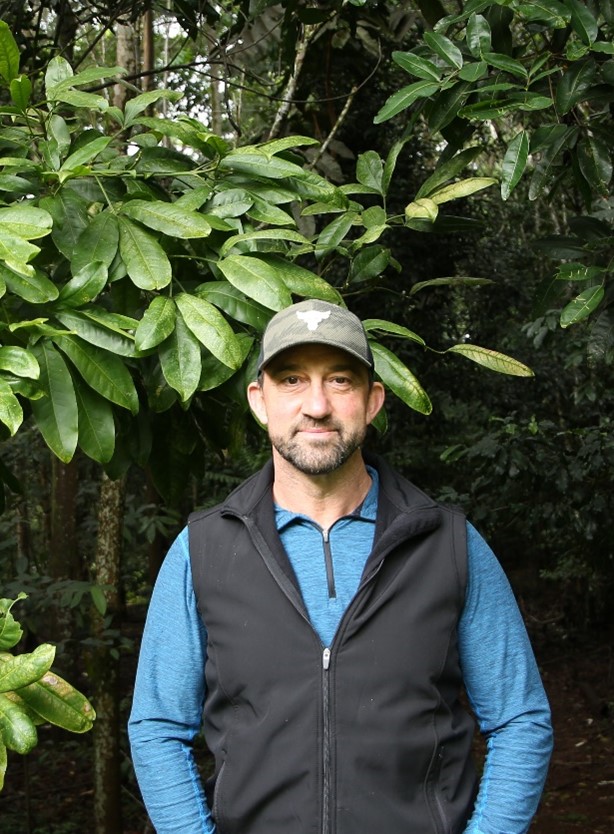
Brett Abikhair
Brett took the plunge and purchased a property in the Alstonville Plateau. Far from the bustling city streets, the property had a rainforest, a creek flowing through it, and an existing macadamia orchard.
The orchard had not been actively managed, and the creek line had major weed infestations. Over the last 9 years, Brett has worked to manage his orchard to be both productive and sustainable, whilst also rehabilitating the riparian areas on his property.
“In the orchard, I did a lot of canopy management and limb removal, letting as much light in as possible to increase the groundcover and reduce soil loss,” Brett said.
“I attended field days and learned about how to be more sustainable in my farming practice, having buffer zones between the orchard and the creek, feeding my trees with organic matter, and not using chemical sprays on my orchard.”
"Coming out of the city, I feel like we all have a responsibility to be more sustainable. Looking after the natural area is a landholder’s responsibility."
“When I first bought the property I saw all these big green trees and thought it was great, but quickly learned it was Camphor and that the creek line was mostly weeds,” Brett said.
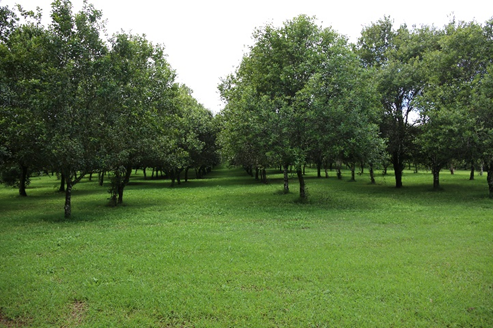
The macadamia orchard on the property has an open canopy with high levels of grass cover to mitigate soil loss.
“I started to revegetate the areas that were just grass with local native rainforest species and tackling the weeds that had taken over other areas.
“It was great to see the weed loads reducing and the native vegetation flourish, but I was struggling to keep on top of it all in some areas.
“North Coast Local Land Service contacted me about their Marine Estate Management Strategy project and I was extremely keen to sign up.”
"This area was just grass when I moved here, I had to mow it constantly and it is quite steep in sections. I decided to turn it into a forest and now the maintenance is minimal, and it is full of wildlife." Brett said.
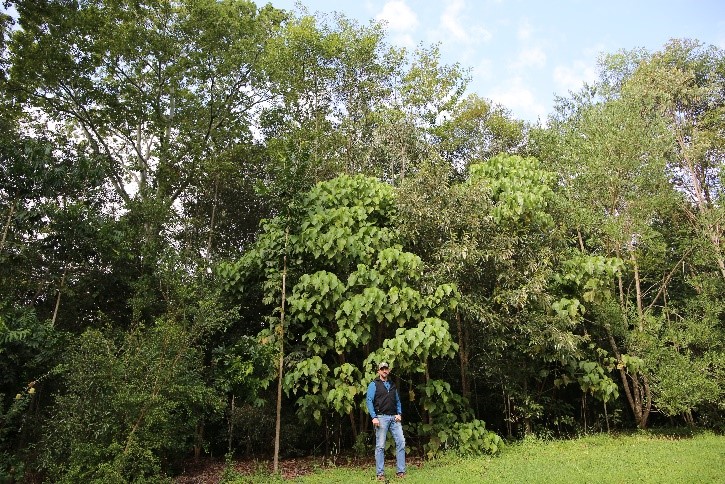
Brett standing in front of a rainforest planting he did 7 years ago in 2016 years ago.
Project background
The Riparian Restoration Project is part of the NSW Government’s Marine Estate Management Strategy (MEMS), focusing on improving water quality and reducing litter-like nutrients and sediment loads entering waterways.
On Brett’s property, the riparian area was sectioned out into 8 different subsites depending on the management needs.
Three different strategies were used in this project:
- Assisted regeneration – in areas where native vegetation where already present but needed weed management.
- Reconstruction – in areas where the banks had previously been completely cleared and needed mass plantings of local native species.
- Combination approach – in areas that had some native vegetation present but would need weed management and infill plantings.
Rows of Lomandra were also planted along the edge of the riparian zone in areas where the orchard has high flows or a narrow riparian area. This was done to help slow the flow of runoff and trap any soil loss of the orchard.
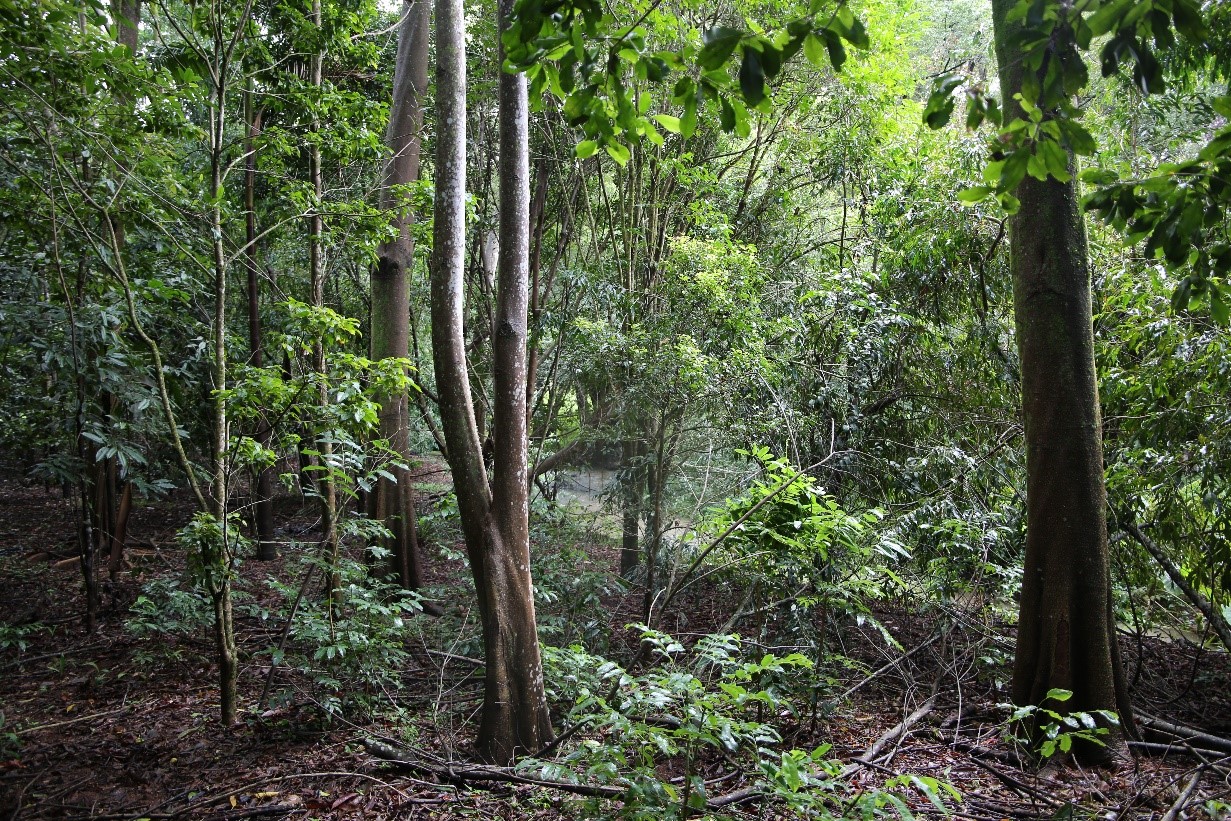
Natural regeneration occurring in area with remnant vegetation now that the vine weeds have been controlled.
Through the eyes of the landholder
The benefits
Being part of a MEMS project has greatly increased the health of my riparian zone. Having professional bush regenerators develop a management plan and then come onto the property and do the amount of work they have has been amazing. There is more birdlife, koalas and wallabies, while the native vegetation is healthy and regenerating on its own.
There is now less maintenance for me to do, the major weed infestations are now minimal, and the trees have grown up and are shading the understory which means fewer weeds. It has also greatly improved the atheistic value of my whole creek line.
I really apricate the work of North Coast Local Land Services and the team at Big Scrub Regeneration, projects like these have such a positive outcome for both landholders and the environment.
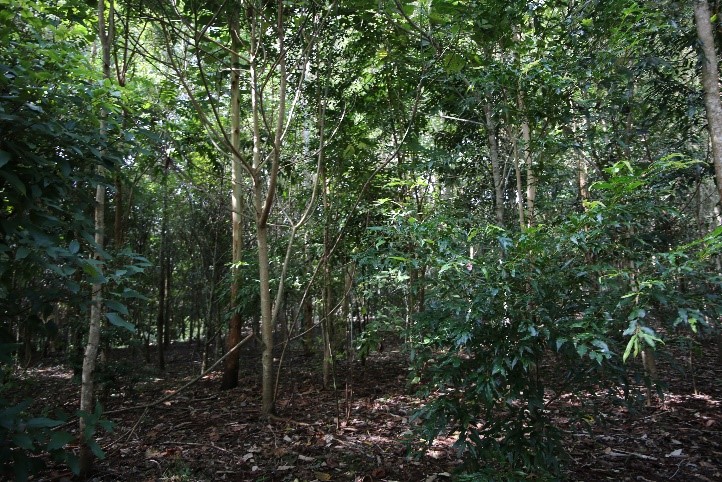
Under the canopy of the rainforest planting.
The challenges
The project started during a drought and I had to water the plants often to keep them alive. Then, in 2022, the floods washed away banks in areas where the trees weren’t big enough yet. Those areas are bouncing back well, but you have to keep up with the maintenance.
Having the crews tackle the harder stuff gave me more time to manage the areas I was confident in doing, so my knowledge and capacity have grown.
Outcomes
My understanding of managing natural areas has gone through the roof. Before being in the project I didn’t realise how much a plan helps. I got rid of Camphors but didn’t have a plan on what to replace them with, so woody weeds took over.
I didn’t know what weeds to prioritise or how to manage them effectively and that made it harder for me. I plan to keep expanding my riparian zones, increasing the amount of Lomandra in high-flow areas, and managing my orchard in a way that works with nature.
From one landholder to another
The biggest takeaway is to have a plan and to learn the ‘WHY’ of bush regeneration. My advice is also to work with the environment. Start in areas that have native vegetation already and expand on it. Ask for help, go to workshops and field days, and learn about what other landholders in your region are doing.
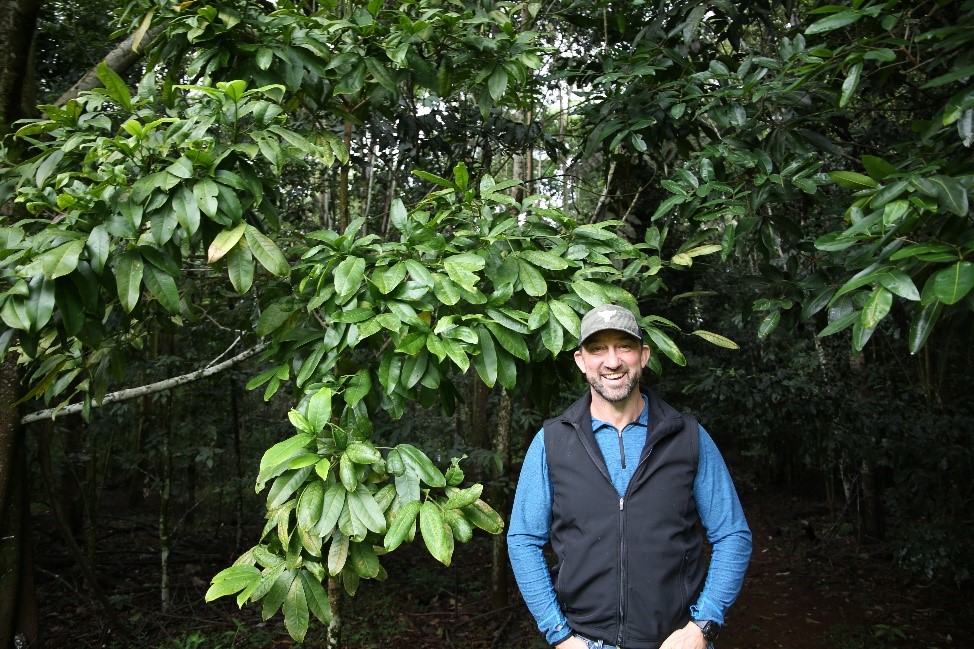
Brett Abikhair.
If you are part of a project or grant, start the maintenance whilst you’re still in the project so you know what you are struggling with and can ask the right questions to feel confident in managing it on your own.
Download a PDF copy of the Elysium Farm case study. PDF, 1991.58 KB
For more information
Contact your nearest Local Land Services office on 1300 795 299.